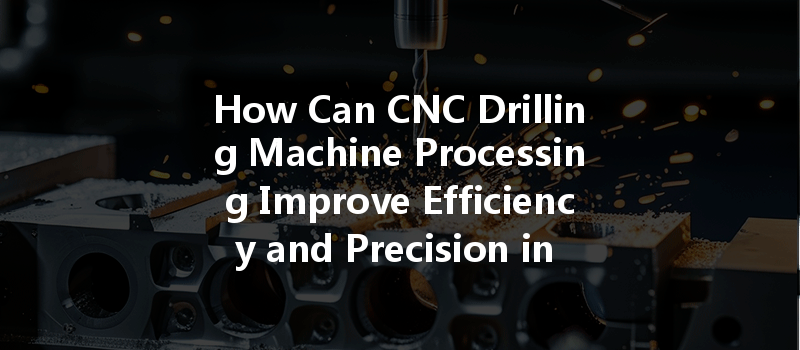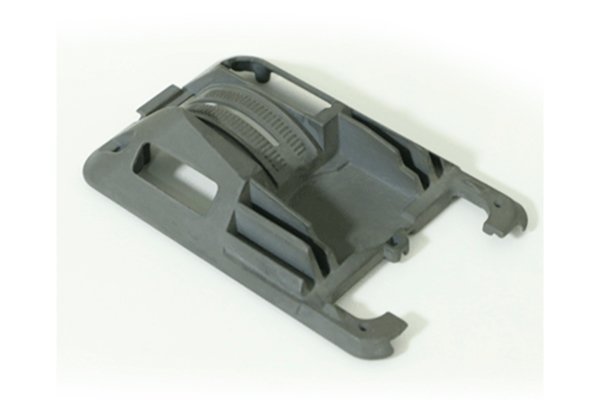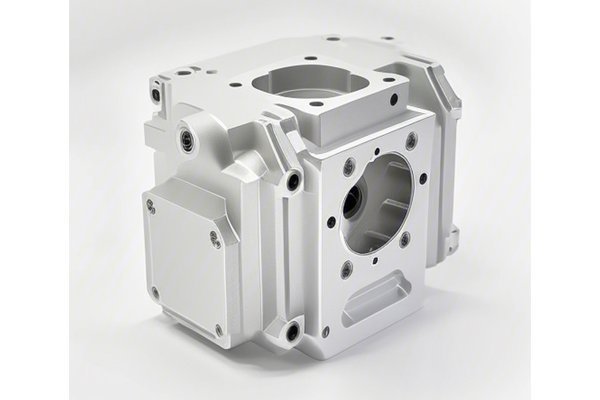Did you know that the global CNC market is projected to reach a staggering $117 billion by 2027? As industries become increasingly competitive, the need for efficient and precise manufacturing processes is elevating CNC (Computer Numerical Control) machining to a focal point of modern production. Among its many applications, CNC drilling is particularly vital. But how can it streamline operations and improve final product quality? Let’s delve into how CNC drilling machine processing enhances efficiency and precision, and explore the technologies and practices that make it an essential tool in today’s manufacturing landscape.
The Importance of Efficiency and Precision in Manufacturing
In any manufacturing environment, efficiency translates to reduced operational costs and increased output. Precision is equally critical, as it ensures product quality and minimizes waste. Traditional drilling methods often struggle to balance these two aspects, leading to increased time expenditures and sub-par results. CNC drilling machines, on the other hand, are engineered to optimize both, significantly improving productivity and quality.
How CNC Drilling Machines Work
Understanding the fundamentals of CNC drilling technology is key to appreciating its benefits. CNC drilling machines are automated equipment that uses pre-programmed computer software to dictate the movement of machinery and tools. This not only eliminates the potential for human error but also allows for complex drilling patterns and depths to be executed with ease.
Components of CNC Drilling Machines
Key Advantages of CNC Drilling Machine Processing
Traditional drilling methods can be incredibly labor-intensive and time-consuming, often resulting in delays in production. CNC drilling machines automate the entire process, significantly reducing the time taken to complete drilling tasks. With advanced spindle speeds and rapid tool changes, CNC drilling considerably cuts down cycle times, leading to faster project turnaround.
Precision is crucial in the manufacturing industry, especially in sectors like aerospace and automotive, where the smallest deviations can lead to catastrophic failures. CNC drills offer high precision, often achieving tolerances within a few microns. The computer-controlled nature eliminates human errors, ensuring that every hole is drilled exactly as specified.
CNC drilling machines can handle a wide variety of materials—ranging from metals like aluminum and steel to plastics and composites. Furthermore, manufacturers can easily upload new specifications or designs into the machine without needing extensive re-tooling or adjustments, making it ideal for customized production runs.
Traditional drilling can often result in significant wastage, especially when adjustments need to be made on-the-fly. CNC drilling, however, allows for precise calculations and depths to be programmed in advance, minimizing scrap and waste during the manufacturing process. This not only saves money but also promotes sustainability.

Once a drilling program is established, replicating it for future use is straightforward. Design and operational parameters can be saved and reused, facilitating mass production of identical items. This consistency is vital for industries demanding high reliability.
CNC drilling machines can easily integrate with other CNC processes like milling, turning, or grinding. This multitasking capability allows for comprehensive manufacturing setups where multiple processes can be completed on a single machine, further enhancing workflow efficiency.
Solutions to Common Challenges in CNC Drilling
Even with all its advantages, CNC drilling can pose challenges. Understanding these challenges and how they can be mitigated is essential for manufacturers aiming to make the most of their CNC technology.
Initial programming can be complex. Investing in skilled operators and training is crucial for overcoming this challenge. Engaging experts during setup and utilizing simulation software can confirm that the intended operations will go smoothly before actual machining begins.
A common challenge in any machining process, tool wear can impact precision. Implementing a comprehensive maintenance schedule and utilizing advanced tool materials designed for longer life can significantly mitigate this issue.
In high-speed drilling, heat generated can lead to thermal expansion resulting in dimensional changes of the material. Employing effective cooling systems and ensuring appropriate feed rates can help control temperatures and minimize distortion.
Differences in material properties can impact drilling performance. It’s essential to consider the specific material properties and adjust drilling parameters accordingly. Utilizing materials with known performance standards for the application can also help.
Even with advanced systems, positioning errors can lead to collisions. Regularly calibrating the machines and using mesh grids for accurate positioning can help avoid these costly mistakes.
CNC drilling machine processing is revolutionizing the manufacturing landscape by marrying efficiency with precision. With its ability to operate at high speeds, provide consistent quality, and minimize waste, it is an invaluable asset for manufacturers seeking to stay competitive. Challenges exist, but with the right strategies and technologies, these can be effectively managed.
As industries continue to evolve, understanding and leveraging the capabilities of CNC drilling machines will not only enhance operational workflows but also pave the way for innovation and growth. As we reflect on the core technologies discussed, it’s imperative to recognize the importance of investing in CNC drilling not just as a tool for manufacturing, but as a cornerstone for sustainable and efficient industrial practices.
Stay ahead by considering how CNC drilling technology can benefit your operations and lead you into an era of truly modern manufacturing processes. In an ever-competitive market, those who embrace technology like CNC drilling will undoubtedly maintain the edge.






